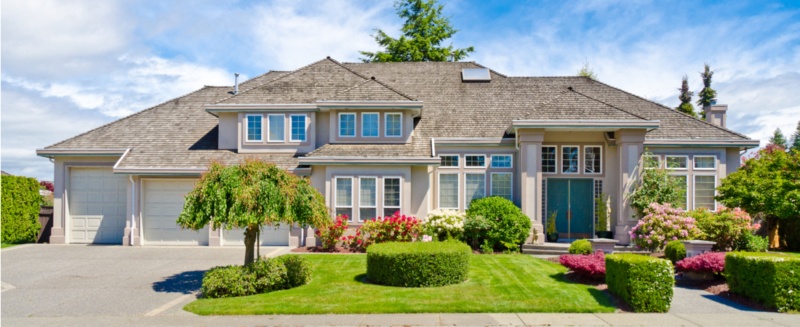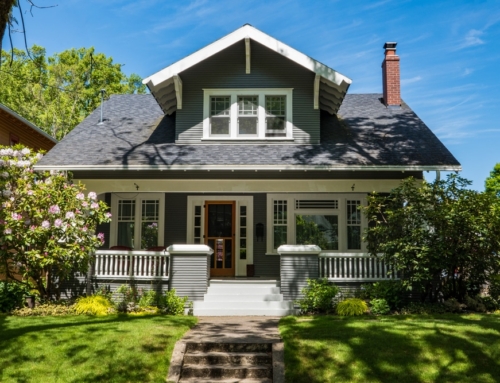When you’re shopping for a mortgage, it can be hard to decide what the best option is for you. Should you take the lower interest rate of an adjustable rate mortgage (ARM), or is it better to lock in your rate for 30 years?
The Consumer Financial Protection Bureau (CFPB) suggests seven things to keep in mind when shopping for a mortgage:
• The size of the loan
• The interest rate
• Closing costs, including lender’s fees
• The annual percentage rate (APR)
• The type of interest rate and whether it can change over time
• How long you have to repay the loan
• Whether the loan has other risky features or penalties
There are two basic categories of mortgages—fixed rate and adjustable rate—but there are several variations within these two categories. To decide which is best for you, consider your options:
Loan type: 30-year fixed-rate mortgage
With this type of mortgage, the borrower has 30 years to pay back the loan at a fixed interest rate, and the monthly payments are the same over the life of the loan. This is the most common type of mortgage.
“Most people want the safety of the 30-year fixed-rate, and that is by far the most popular loan in the market,” says Walter Molony, economic issues media manager for the National Association of Realtors. “It’s the best value, I think.” That’s especially true when you consider how low interest rates dropped following the Great Recession.
When to consider it: This is the mortgage for you if you’re looking for a predictable home loan payment. No matter what the housing market is doing or how interest rates change, your payments will stay the same. Because this is the longest loan term offered, your payments will be spread out, and therefore they will be lower than with shorter mortgages. People who choose this home financing option usually are planning to stay in their home and keep the same mortgage for several years.
Loan type: 15-year fixed-rate mortgage
With this kind of mortgage, the borrower has 15 years to pay back the loan at a fixed interest rate. Like the 30-year fixed-rate mortgage, the payments will be the same over the life of the loan.
The difference here is capital, Molony explains. You’ll pay less interest over the life of the loan because the term is shorter, but your monthly payments will be much higher—sometimes nearly double.
“Most people historically have not been able to afford the increased payment,” Molony says. “It’s very, very worth it and a smart move if you can afford to do it, but the fact is it’s a difficult financial stretch.”
Qualifying for a 15-year mortgage will likely be more difficult than qualifying for a 30-year loan because the income requirements will likely be higher, the Mortgage Bankers Association (MBA) warns.
When to consider it: If you can afford the higher payments and are planning to stay in your home for many years, this might be the mortgage for you. While your monthly payments will be higher than they would with a 30-year loan term, your interest rate will be lower, and a larger portion of your monthly payment will be applied to the principal amount of your loan. This is also a great option if you are refinancing your loan and the remaining term of that loan is 20 years or less.
Loan type: Adjustable-rate mortgage (ARM)
Offered over several different terms, these mortgages can offer lower interest rates and payments initially. However, the borrower assumes some risk with an ARM, according to the MBA.
The lower initial payment with an ARM makes it more affordable at first, but the borrower has to accept the risk of an increased mortgage payment down the road, after the initial fixed interest rate period (which typically lasts for 3 years, 5 years, 7 years, or 10 years). There are limitations as to how much and how quickly the interest rate can rise after this period, but it may eventually go up.
When to consider it: “If you’re in a position where you’re early in your career, then you might be a little bit more comfortable with an adjustable-rate mortgage” because the up-front costs are less, Molony says. “But the fact is, interest rates are going to rise. “
People who choose an ARM generally intend to sell or refinance their mortgage before any interest adjustments kick in.
These mortgages are riskier to both the buyer and the lender, so in some cases (such as when the housing market is in trouble), an ARM may not be available.
Talk to your sales agent and a few different lenders. Tell them each your budget, how long you plan to stay in the house, and with what you’re comfortable, and they can work to help you make an educated decision.






